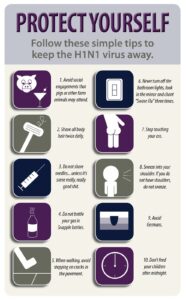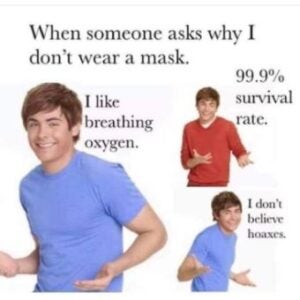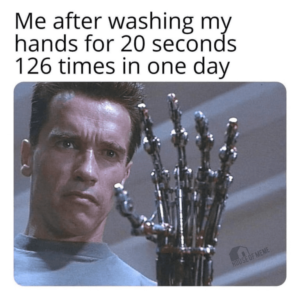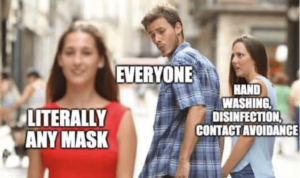Public health aims to protect the health and well-being of communities. This broad definition can cover a variety of different aspects of life. To achieve public health goals, communication is vital. As technology changes how we receive and share information, public health communication can rapidly change and adapt to reach people efficiently. The coronavirus pandemic has proven how essential it is to communicate the appropriate information at the right time. Through memes and virality, we can explore how the flow of public health communication efforts can both be strengthened and disrupted.
There are a plethora of ways to communicate information currently at our disposal. Infographics graphically may be the most common public health messaging measures. From the H1N1 outbreak in 2009 to the current coronavirus pandemic, infographics have served as valuable educational tools and are reproducible. The visual appeal of an infographic makes it easier for readers to understand and digest information. The infographics below share knowledge about the specific outbreaks and share prevention measures.



Infographics about COVID-19 and H1N1/Swine Flu.
The benefits of infographics and other public health messages can be disrupted with the misinformation found in some memes. False information can arise with the spread of memes and content from subcommunities online. In addition, these memes can reinforce and inspire racist attitudes and destructive behaviors that endanger others, such as not wearing masks or not being hygienic. The increase in hate crimes against people of Asian descent is an alarming public health issue and can be traced back to xenophobic attitudes online. Once these images go viral, it may become difficult to communicate and enforce the correct information.
Below are videos on the increase in hate crimes against Asian Americans:
https://www.youtube.com/watch?v=JgjJcV84zaU
https://www.youtube.com/watch?v=1Jn03wW0Slw (Note: this video includes satire)



Memes displaying false or racist attitudes.
On the other hand, memes can be beneficial when they can further discussion of a topic while showing a basic understanding of appropriate prevention measures. When analyzing the memes below, behaviors that would help stop the spread of coronavirus are mentioned. These include washing hands, wearing masks, and being cautious of our behavior. These invoke a sense of familiarity or can be relatable for viewers and also remind people to participate in these behaviors.



Memes encouraging correct prevention measures.
To summarize, paired with other public health communication methods, it is clear that memes would be useful given the increase in social media usage. Memes can create a sense of relatability and provide some humor, which can be beneficial with the intense circumstances of a pandemic. However, when memes or other viral content are based on prejudice and discrimination, they may do more harm than good.
Amna Ashraf